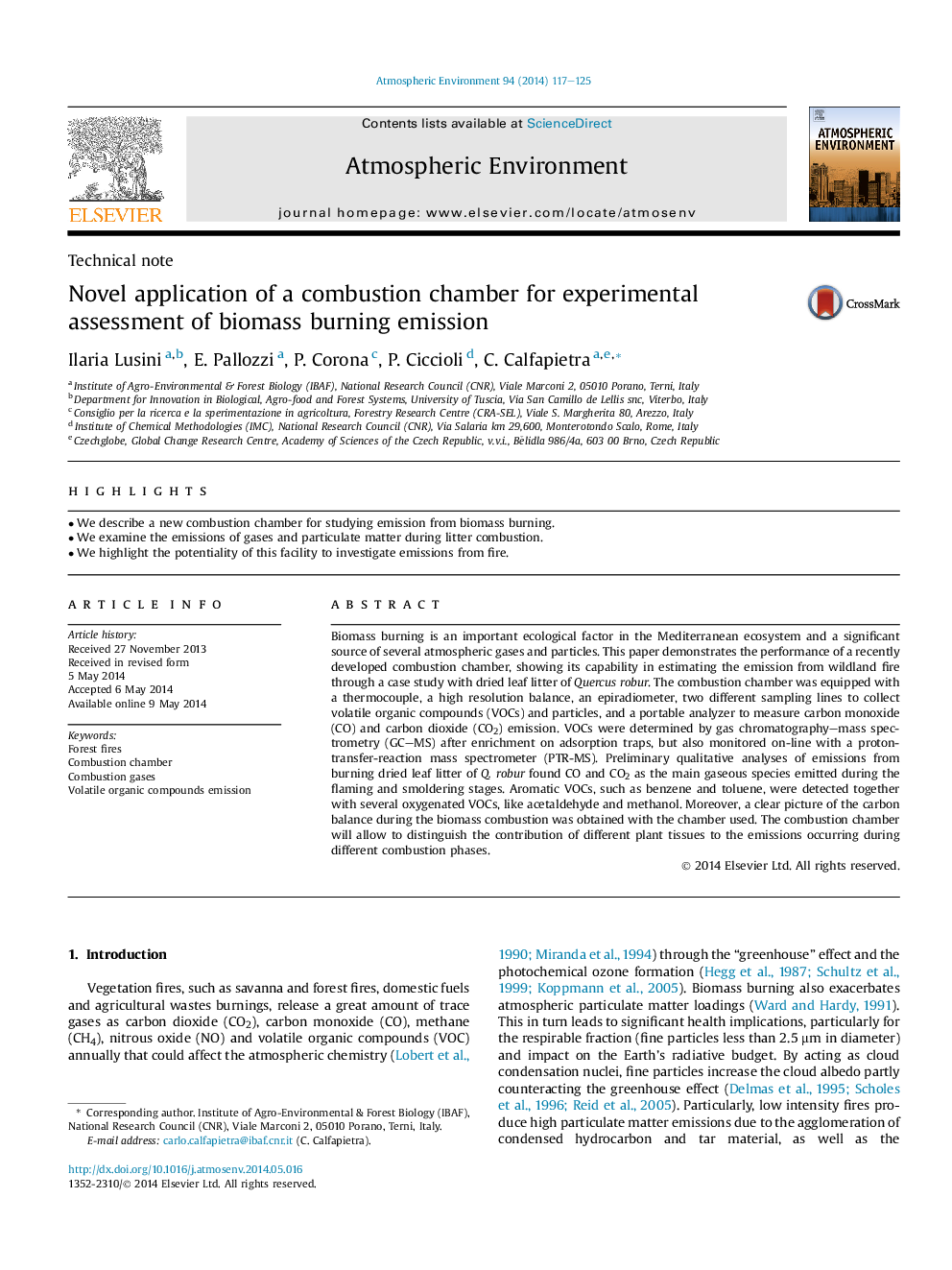| Article ID | Journal | Published Year | Pages | File Type |
|---|---|---|---|---|
| 6339730 | Atmospheric Environment | 2014 | 9 Pages |
Abstract
Biomass burning is an important ecological factor in the Mediterranean ecosystem and a significant source of several atmospheric gases and particles. This paper demonstrates the performance of a recently developed combustion chamber, showing its capability in estimating the emission from wildland fire through a case study with dried leaf litter of Quercus robur. The combustion chamber was equipped with a thermocouple, a high resolution balance, an epiradiometer, two different sampling lines to collect volatile organic compounds (VOCs) and particles, and a portable analyzer to measure carbon monoxide (CO) and carbon dioxide (CO2) emission. VOCs were determined by gas chromatography-mass spectrometry (GC-MS) after enrichment on adsorption traps, but also monitored on-line with a proton-transfer-reaction mass spectrometer (PTR-MS). Preliminary qualitative analyses of emissions from burning dried leaf litter of Q. robur found CO and CO2 as the main gaseous species emitted during the flaming and smoldering stages. Aromatic VOCs, such as benzene and toluene, were detected together with several oxygenated VOCs, like acetaldehyde and methanol. Moreover, a clear picture of the carbon balance during the biomass combustion was obtained with the chamber used. The combustion chamber will allow to distinguish the contribution of different plant tissues to the emissions occurring during different combustion phases.
Related Topics
Physical Sciences and Engineering
Earth and Planetary Sciences
Atmospheric Science
Authors
Ilaria Lusini, E. Pallozzi, P. Corona, P. Ciccioli, C. Calfapietra,
